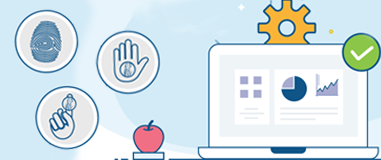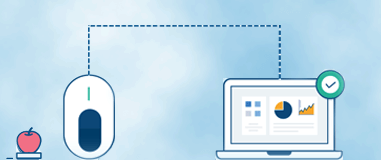Case study: Cal Poly Pomona Foundation, Inc.
Summary: Fingerprint biometrics for Kronos workforce timekeeper
Biometric modality: Palm vein
Number of hardware units /terminals deployed: 20
Database size: 600
Purpose: Biometric identification for workforce management
M2SYS works closely with its clients, enabling them to capitalize on the benefits of using biometrics for security and accelerating their return on investment (ROI). These case studies of multi-modal biometrics security deployments for various verticals show how biometric security software solutions can protect the welfare of citizens, stop corruption and fraud, and create efficiency.
Established in 1966, the Cal Poly Pomona Foundation, Inc. is an integral component for the educational mission of the University. The Foundation exists to provide the highest level of service and financial support while maintaining corporate fiscal integrity.
The role of the Foundation is to provide convenient and appropriate goods and services at a reasonable price and to develop additional assets and resources for the University. It helps foster and maintain an effective learning environment to provide educational opportunities, reflects an institutional image of competence and quality and encourages cooperative relations within the University community.
Challenge
There were a number of reasons behind the decision to implement biometric fingerprint technology with Cal Poly Pomona Foundation’s KRONOS time and attendance software. First, the previous clock in system required employees to physically log into a computer which often times created a line of folks waiting to log in and the process could take 2 – 3 minutes per employee. They were seeking to incorporate a check-in/check-out interface that eliminated the backlog and sped up the process to decrease lost employee
productivity.
Second, due to the previous check-in/check-out procedure a number of recurring time stamp errors would persist causing supervisors or payroll staff to spend time investigating and correcting the errors which could otherwise be spent on more productive tasks.
Third, they perceived that there may have been a problem with “buddy punching” which is a practice where an employee will manually sign in for another employee who is tardy or absent from work. To eliminate this from occurring, they were seeking to institute a check-in/check-out procedure that required an individual to physically be present to get credit for hours they worked.
Solution
Cal Poly Pomona Foundation has implemented M2SYS biometric fingerprint technology with their KRONOS time and attendance software. Employees use fingerprint readers to clock in and clock out at the beginning and end of their shifts as well as any regularly scheduled lunch breaks.
When a staff member places their finger on the reader, the reader interfaces with the KRONOS time and attendance software to identify the employee and clock them in or out creating an electronic time stamp that can be viewed immediately by the employee and supervisor and processed for payroll.
Benefit
Since implementing the fingerprint biometric technology with their KRONOS time and attendance software, Cal Poly Pomona Foundation has been able to realize many benefits and advantages and a handsome return on their investment. First, they estimate that there has been at least 10 employment service staff hours saved per pay cycle by eliminating the need for supervisors to authorize hours in the system after processing. That equates to 10 hours per cycle, 20 hours per month and approximately 240 hours per year which they have been able to allocate to other projects and initiatives. Monetarily speaking, they estimate that they are saving approximately $15,000 per year through a $5,000 investment in biometric technology.
Second, they had observed that some employees who did not consider themselves “computer literate” were uncomfortable using computers as a means to clock-in and clock-out for work. Since they implemented biometric fingerprint technology, they have received direct feedback from all staff who like the biometric system and feel that it creates a comfortable and more expedient way to clock-in and clock- out.
Third, instituting a fast biometric component to the KRONOS time and attendance software has saved time for employees using the system. They estimate that it saves approximately 2 minutes per use for each employee eliminating the need to enter a user name and password into a computer. That equates to 8 minutes per day, approximately 3 hours per month and 36 hours per year for 450 employees totaling 16,200 hours saved.
M2SYS Technology case studies on biometrics
Contact us
Our knowledgeable sales consultants are located worldwide to answer any questions that you have about our identity management technology. Please complete the form below with as much information as you can so we are best prepared to assist you.




